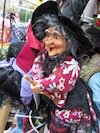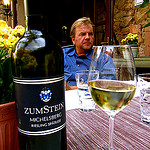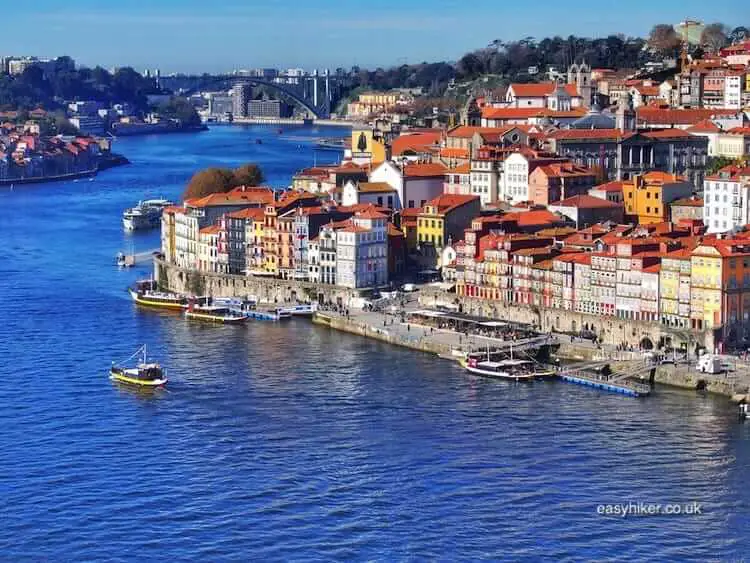Germany’s northwesterly region between Bielefeld and Gütersloh is one of the country’s economic powerhouses.
The names of the region’s towns and cities may mean little to you, but you are probably familiar with some of the brands and products that come from here.
The kitchens and white goods of Miele, frozen pizzas and baking goods made by Dr Oetker, books and TV programmes from one of the many international Bertelsmann affiliates (including Penguin Random House and Fremantle Media), fashion manufactured under the label of Gerry Weber all come from here.
The area attracts many business travellers, but only few tourists. This may not be unrelated to the fact that the city of Bielefeld, the largest in the region, is – although not entirely bereft of interesting things to look at – altogether relatively uncharming …
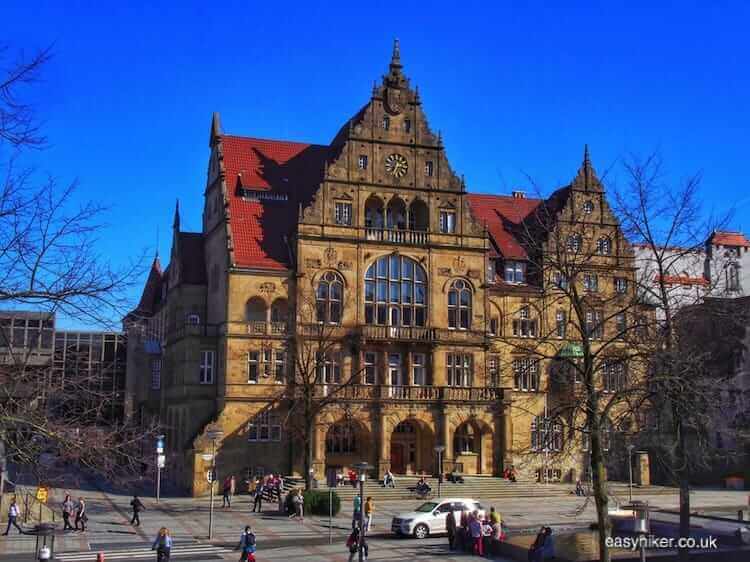
… as is much of the landscape immediately around it. If you are looking for a hike, you can travel to the conveniently close-at-foot Teutoburg Forest and the Hermannshöhen (one of Germany’s most famous long-distance trails) …
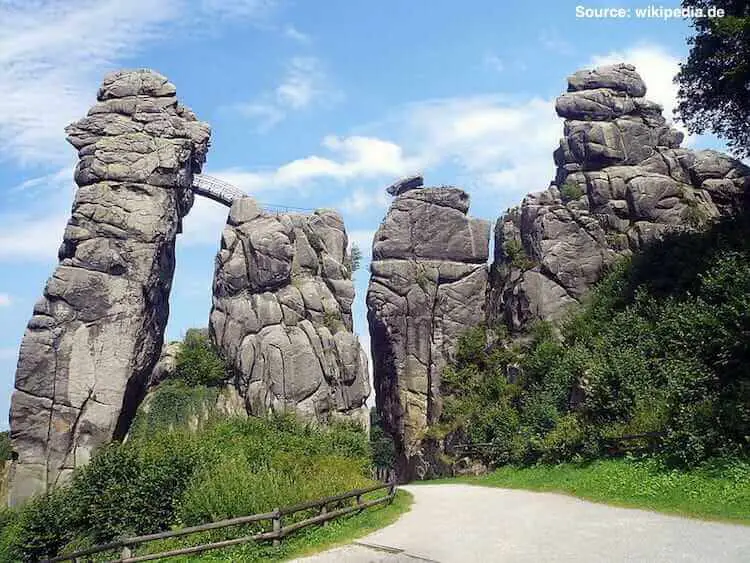
… but if you are not properly equipped and in no mood for a larger time commitment, you might be interested in something nearer-by and less strenuous.
Something like the Rheda Castle in Bielefeld…
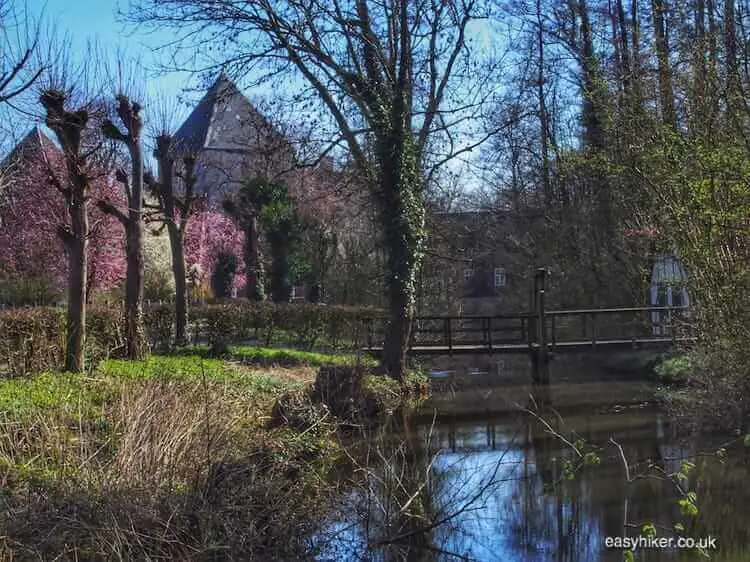
Historic seats of aristocratic families all over Europe generally come in one of two shapes: they are either medieval fortresses or Baroque pleasure domes.
Rheda Castle in Bielefeld is one of the rare such buildings which are – visibly – both: when, in the 1730s, the Princes of Bentheim-Tecklenburg wanted to update their home to go with the latest architectural fashion, they decided not to raze the old structure to the ground but to build a new palace right next to the old.
The result is a curious blend of styles …
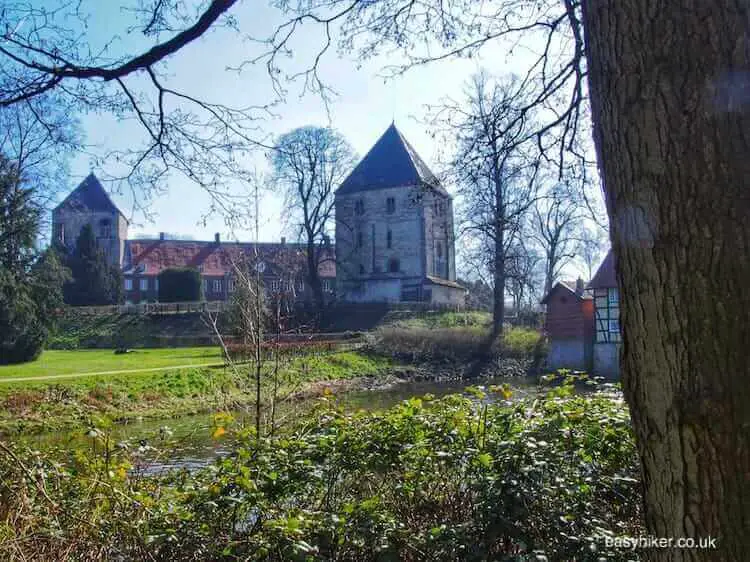
… which may or may not have won the 18th century equivalent of the Pritzker Prize for architecture but which has obviously suited the family’s needs very well ever since.
So well, as a matter of fact, that they never moved away: the castle is still inhabited by the Bentheim-Tecklenburgs, one of Europe’s most distinguished aristocratic families.
Maximilian Erbprinz zu Bentheim-Tecklenburg, his English wife Marissa and their three children are related to nearly all European monarchs (including the Queen), and European royals have paid visits to this castle as well as to several of the family’s other homes.
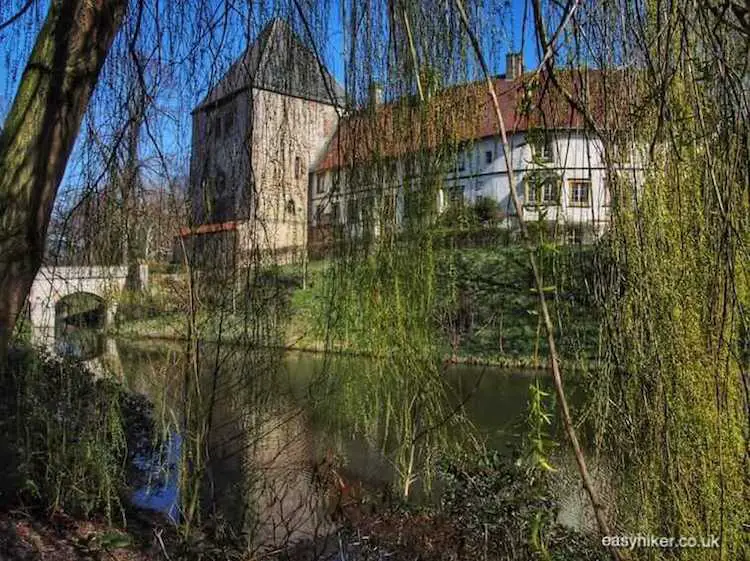
Since the castle is still inhabited by its owners, you cannot just walk inside for a visit, but there is a foot path that allows you to walk around the back of the building: turn clockwise after the gate house near the entrance.
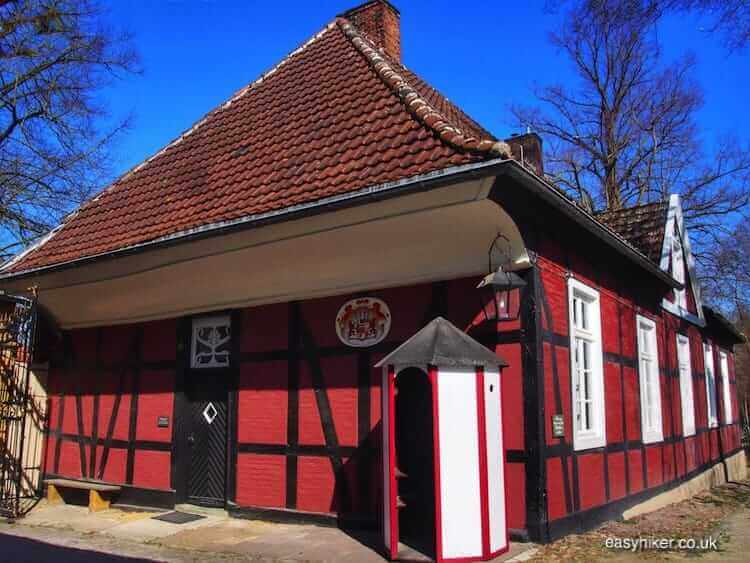
You can also explore the gardens in front of the castle, which were added at the time of the Baroque conversion.
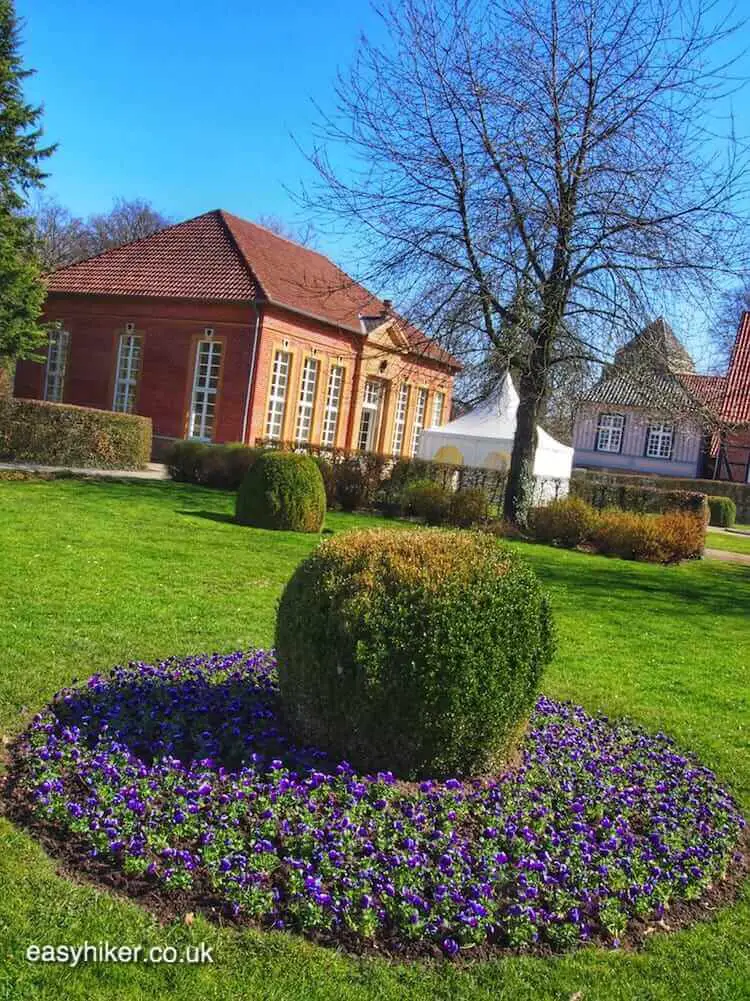
Water is the central element of Rheda Castle: for one, there is the river Ems one of whose fords the castle was designed to protect when it was first constructed in the 1100s.
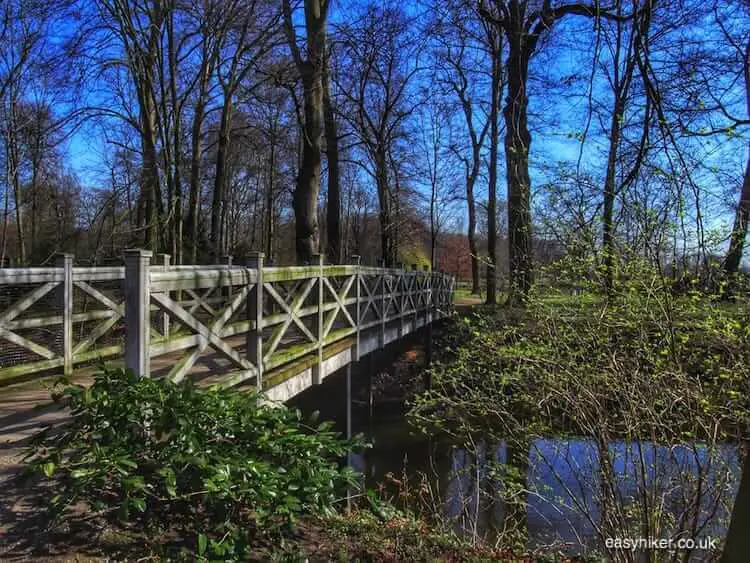
Then there is the moat that was built to protect the castle itself (a relatively new idea at the time of its construction), …
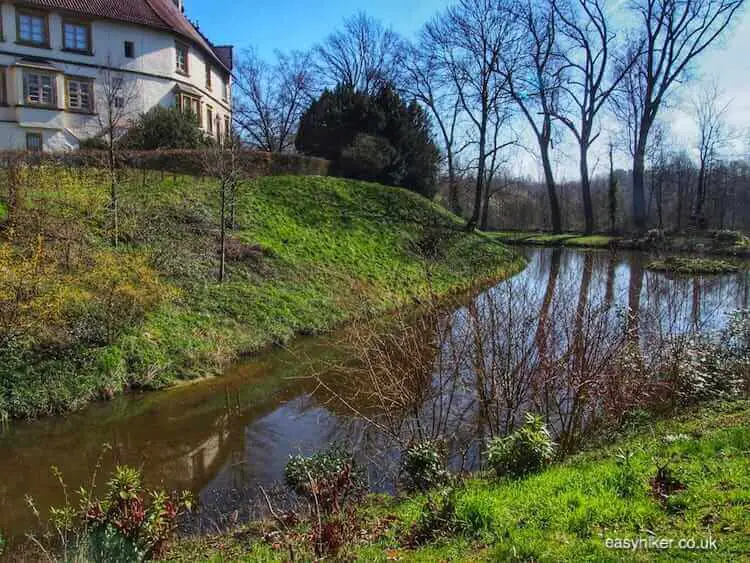
… and there is a large number of ornamental ponds that were added in the 18th century.
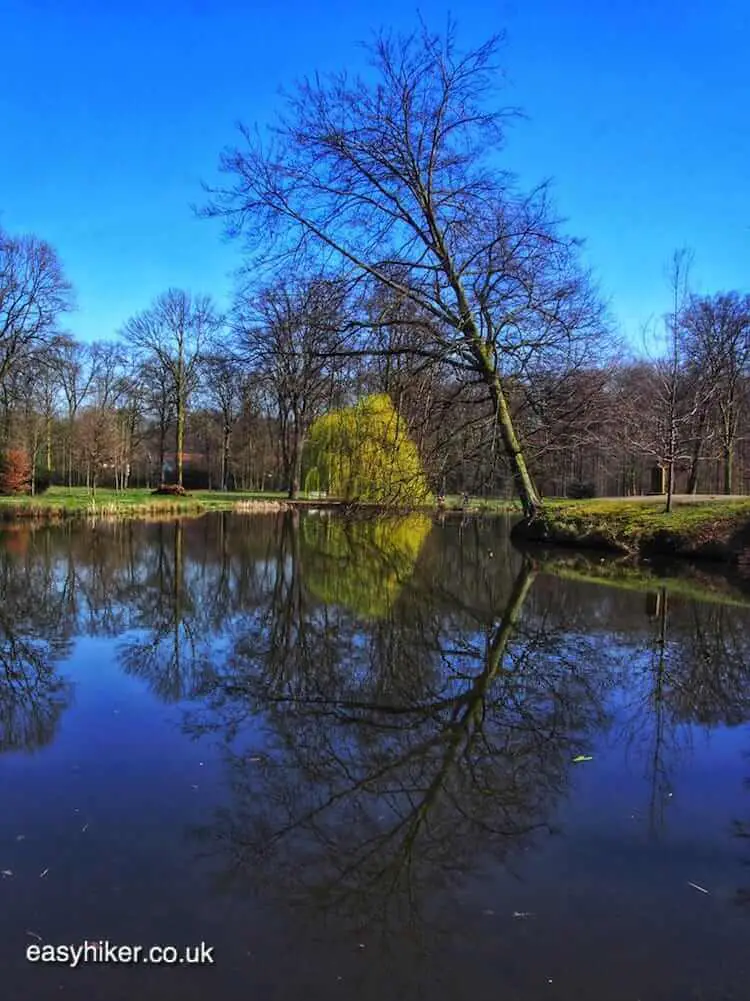
Finally, the “water motif” is further developed by some of the outbuildings such as the picturesque water mill that is powered by the adjacent river.
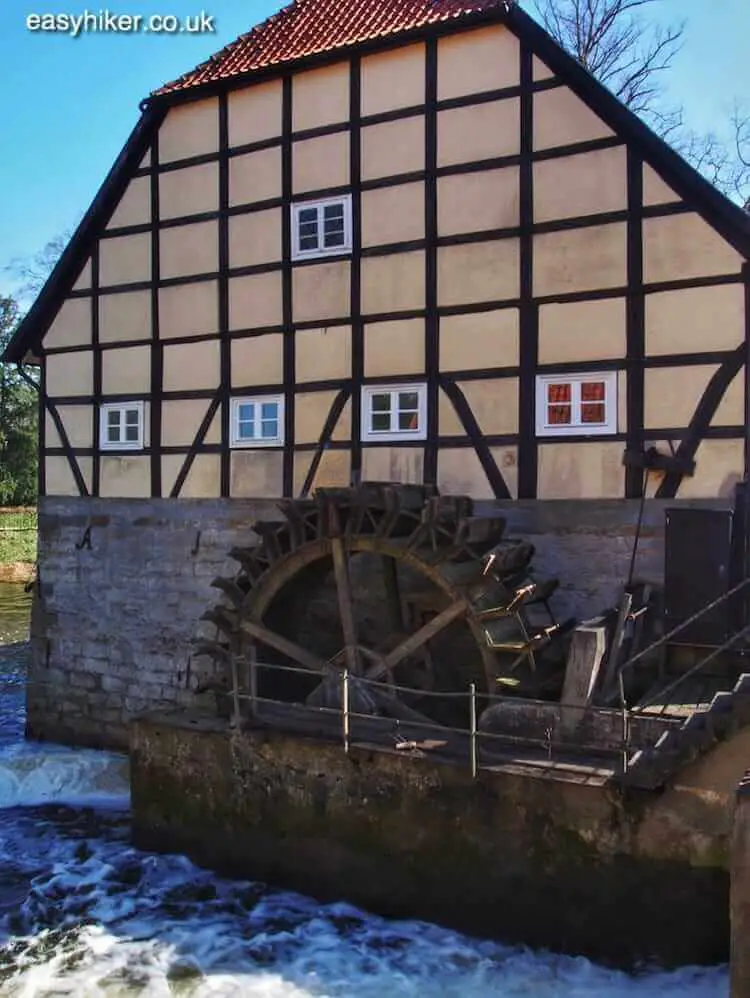
The castle itself can only be visited by guided tours that are offered every Sunday in the summer months (starting in late March). Groups meet at 2 p.m. in front of the Orangerie in the castle gardens.
To go to Rheda Castle, take the train from Bielefeld (or from Hamm in the opposite direction) to Rheda-Wiedenbrück station and follow the signs to Schloss Rheda.
This walk is approx. 20 minutes long and will take you through the town centre where you can also find some attractive half-timbered houses including the well-known Leineweber Museum.
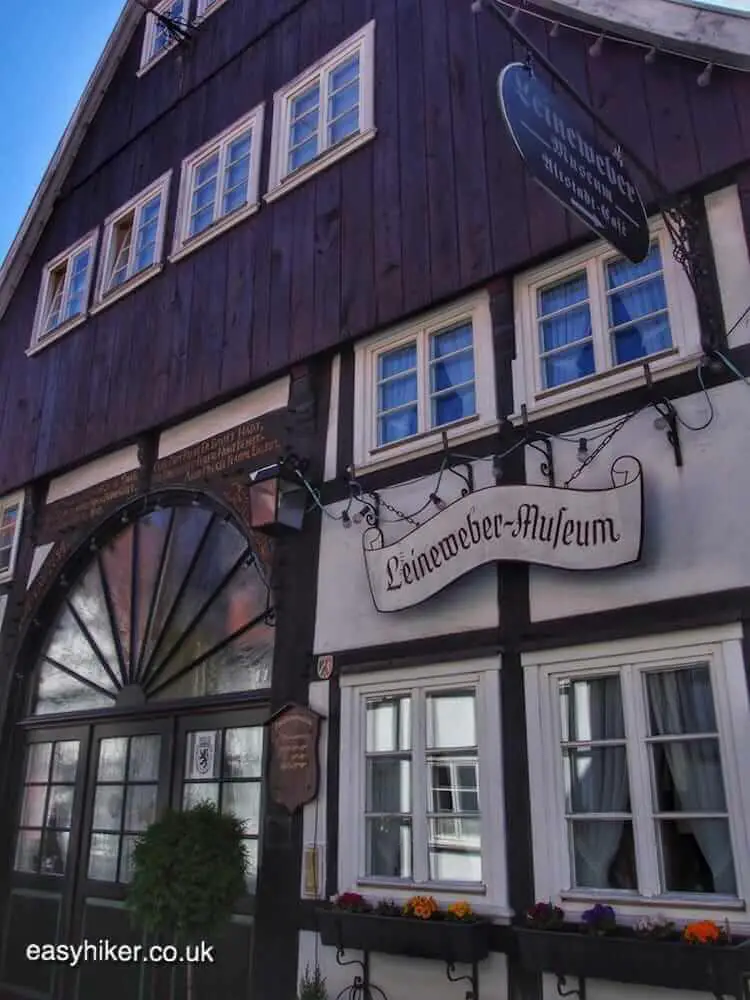
“Linnen weavers” were the urban proletariat of the Middle Ages, “industrial workers” before the invention of the underlying concept. Their trade was considered “unskilled”, which meant that they themselves as well as their children could not be admitted to a proper livery company of skilled professionals (shoemakers, taylors, bakers, etc.).
Many linnen weavers nevertheless achieved a modicum of wealth, and when the medieval society of all-powerful guilds and associations collapsed in the early modern age, they were able to translate their prosperity into political influence and social standing.
When the building of today’s Leinweber Museum was constructed in 1734, the original inhabitants of this handsome house were already well-established in their church and local community.
Rheda-Wiedenbrück may – much like Bielefeld, its larger neighbour – not be the most beautiful town in Germany, but it has been around for long enough to guarantee that you are able to find some interesting historic detail wherever you go.
During your walk, for example, you will also come across what must surely be Germany’s most ornate post box.
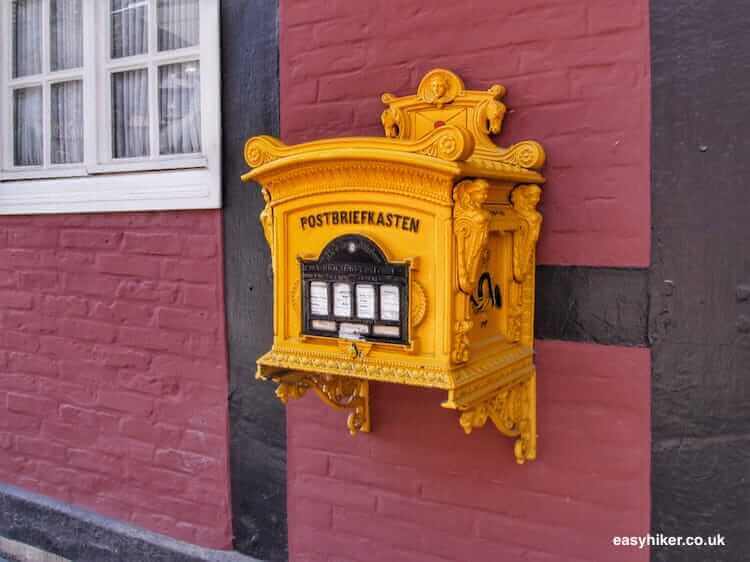
Can you spot it? Why not send a post card home from here? It is still in full operation and emptied once every day.



